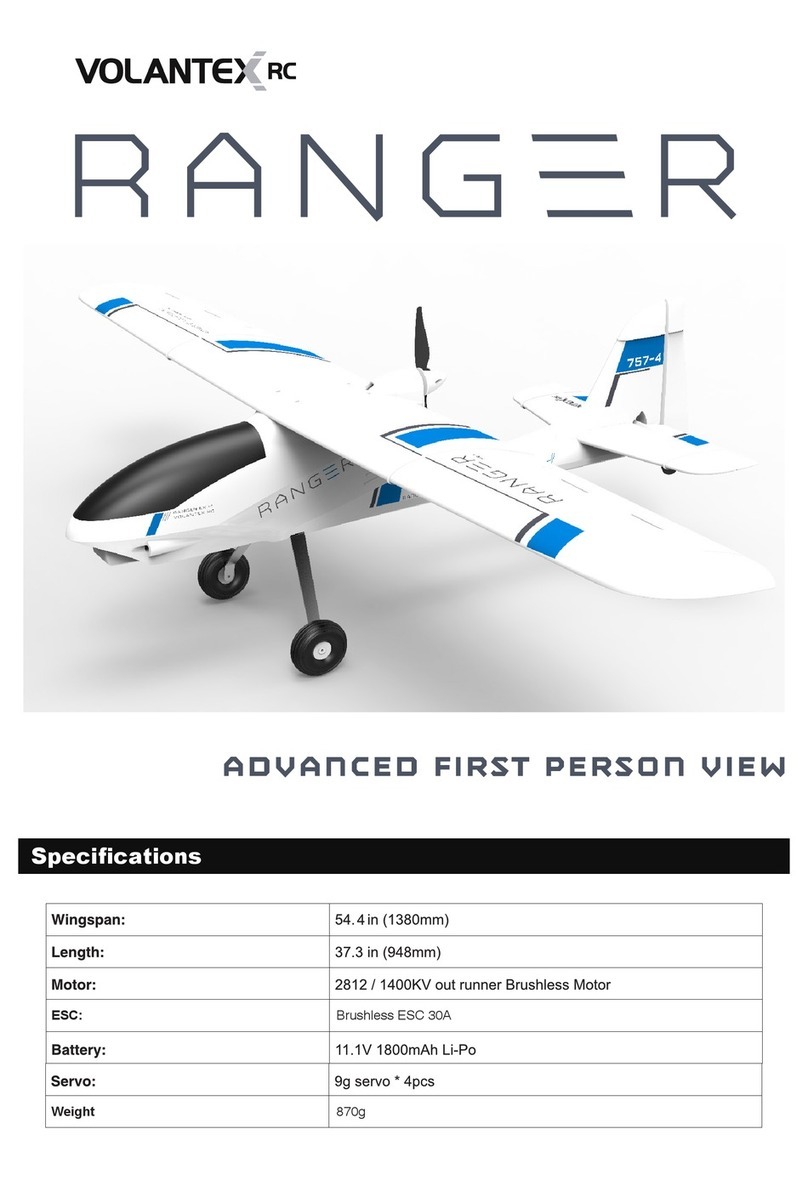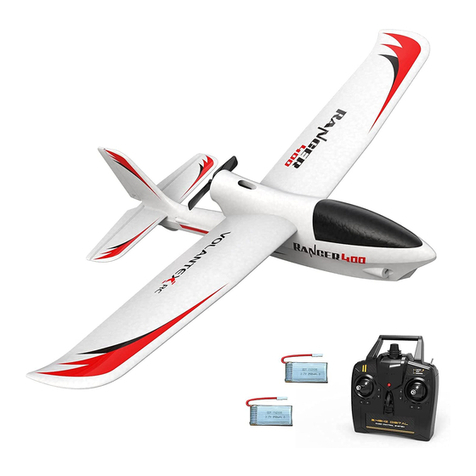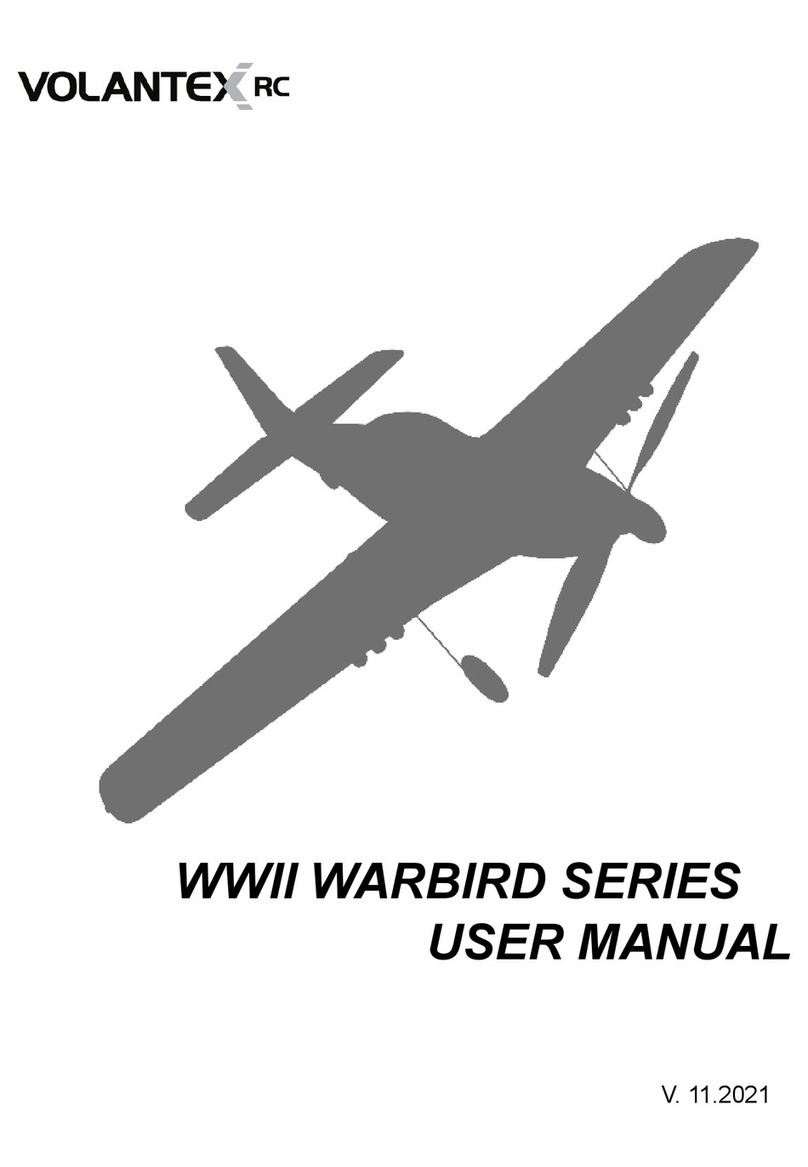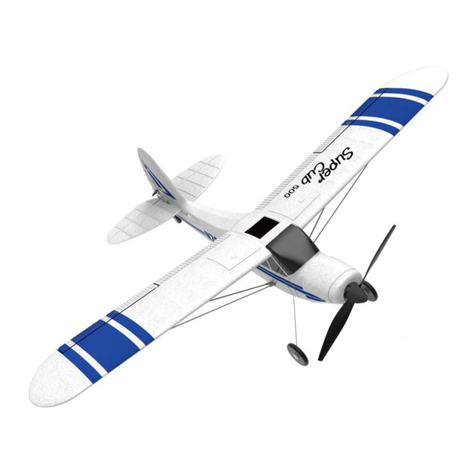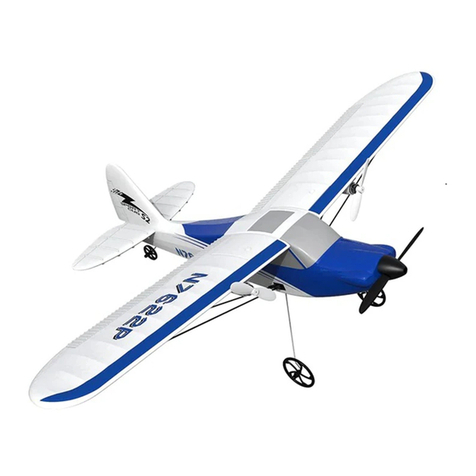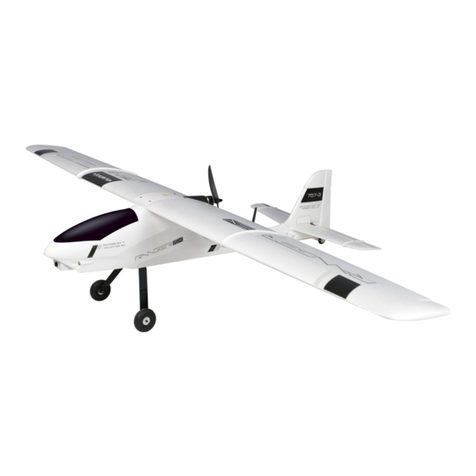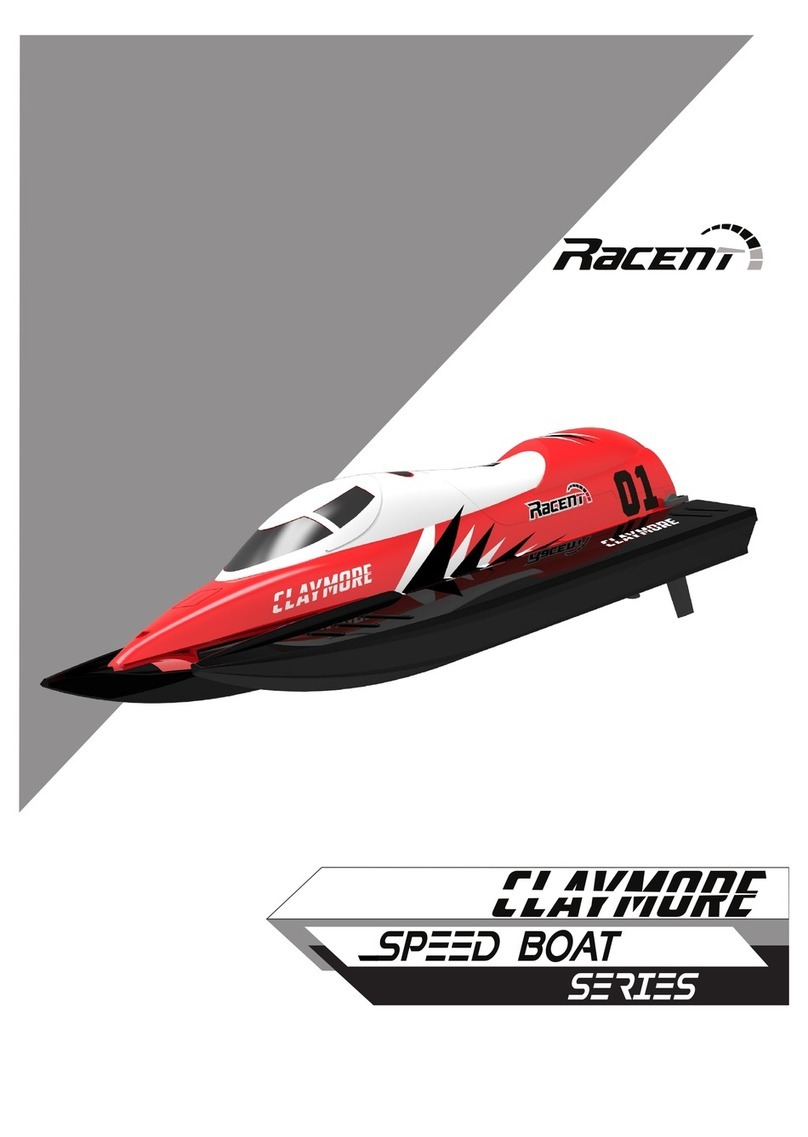We , as the kit manufacturer have providedyou with a top quality,
thoroughly
tested kit and instructions, but ultimately the quality and
flyability of your finished model depends on how you build it. Therefore,
we cannot in any
way guarantee the performance of your completed model,
and no represent
ations are expressed or implied as to the performance or
safety of your c o
mpleted model.
This airplane is not a toy, but rather a sophisticated working
model that
functions very much like a full size airplane. Because of its perfor
mance
capabilities, the plane, if not assembled and operated correctly could
possibly
cause injury to yourself or spectators and damage property.
Keep items that could become entangled aw
ay
from the rotating propeller,
including loose clothing and toolsetc. Be especially
sure to keep your
hands, face and other parts of your body away from the
propeller blades.
As the user of this product you are solely and wholly responsible for oper-
ating it in a manner that does not endanger yourself and others or result
in damage to the property of others.
Y
ou must assemble the model according to the instructions. Do not alter or
modify the model in anyway, as doing so may result in an unsafe or
unflyable mode
l.
In a few cases the instructions may differ slightly from the
photos due to updates. In these
instances the written instructions
should be considered as correct.
If you are not an experienced pilot or have not flown this type of model
before, we recommend that you get the assistance of an experienced
pilot in your R/C club for your first flight. If you are not a member of a club,
your local hobby shop should have information about clubs in your area
whose membership includes experienced pilots.
This model has been flown and flight tested to beyond normal limits, but if
the plane
is used for extreme and high stress flying such as racing , or if
a motor
larger than the one in the recommended range is used, the
modeler is respon
sible for taking steps to reinforce the high stress points
and / or substituting
hardware more suitable for the increased stresses.
2
